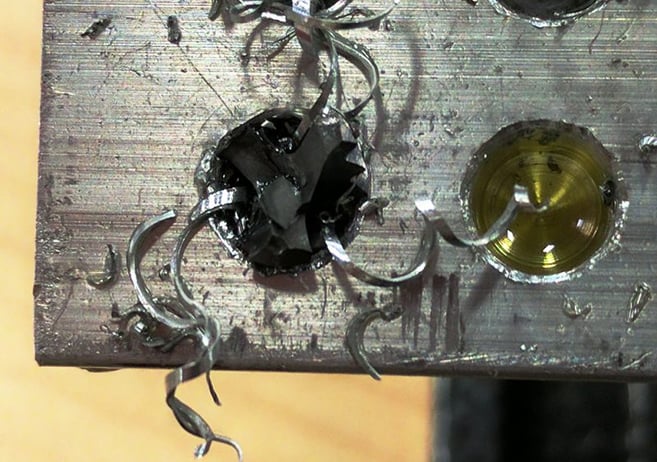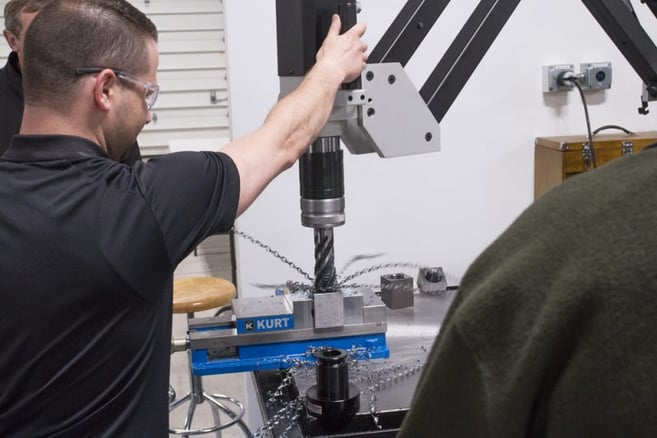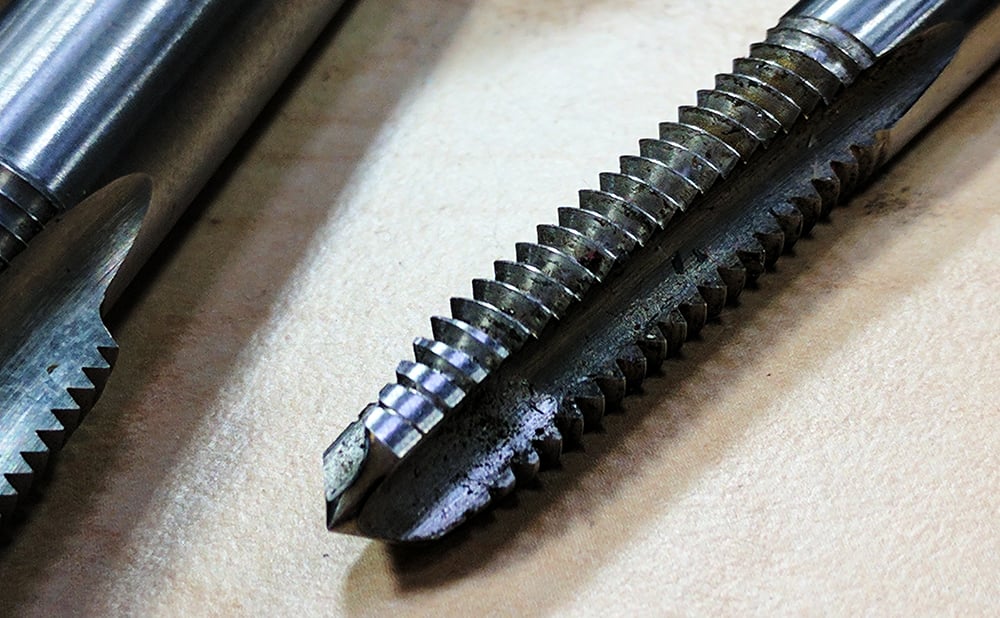The internet is rife with anxious machinists that are either iffy about their tapping techniques or they avoid tapping with any method beyond the familiar. Understandably so… taps aren’t always cheap and breaking one off in a hole will (at worst) ruin your part or (at best) waste hours of tedious work trying to get it out. While there is no easy answer to breaking a tap, knowing your options can help avoid breakage. So, here are four of the simplest ways to tap.
Hand Tapping
The simplest way to tap a hole is to buy a set of hand taps. Often sold in a set with dies, hand taps work well, but they can be risky in harder materials. Hand tapping is one of the safest ways to tap because you have direct feedback and can stop before you break it. Though with hand tapping it is harder to ensure that the tap will enter the part square. Tormach sells a spring-loaded tap guide (PN32640) to help ensure a good thread when manually tapping.
Rigid Tapping
Rigid tapping is possible when a spindle has an encoder. That encoder tells the controller just how many times the spindle has rotated, allowing a valuable relationship between rotations and depth to be established. More precise tapping allows for fewer broken taps, but it also means faster tapping. Tormach’s 15L Slant-PRO lathe has an encoder for rigid tapping capabilities and allows for the machine to quickly create precise, threaded holes.

Tension-Compression (Float) Tapping
The Tormach Tension-Compression Tapping Head (PN32020) is the perfect example of float tapping. Since the Series 3 PCNC 1100 and PCNC 770 don’t have encoders on their spindles, this tapping head provides the ability to tap thanks to a compression system. Without an encoder, the control doesn’t “know” how fast the machine’s spindle is turning. The compression system makes up the difference by allowing for a small amount of axial float or compliance. While forgiving on your tools, this process of tapping can also drive you to more broken taps, since you have to time the stopping and reversion of the spindle with a pause in the feed rate at the bottom of the hole – too long or too short will break your tap right off.

Tapping Arms
There are pneumatic tapping arms that can be used almost like a drill press in the sense that you line things up by hand. They utilize a clutch system to tap a hole, so when there is too much pressure on the tap, it clicks off. This system is fast, but not quite as fast as doing the tapping on your CNC machine. A tapping arm’s biggest advantage is that it frees up your machine to be working on other (more profitable) tasks. While slower than the CNC version, this method of tapping is still better than hand tapping, since the design of a tap arm forces the head to be perpendicular to your benchtop, forcing squarely tapped holes. Like anything in the world of machining, there are a number of ways to tap and create threads inside existing holes, but tapping is a fast and fairly inexpensive method to do so.


